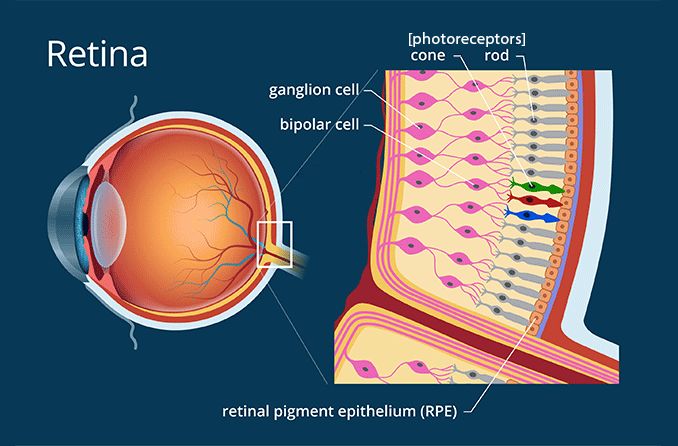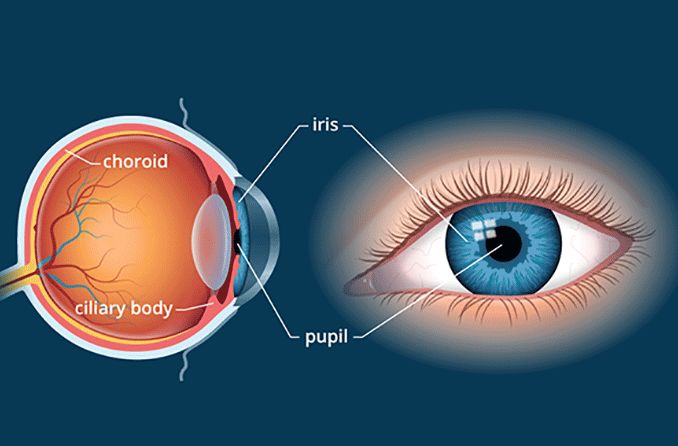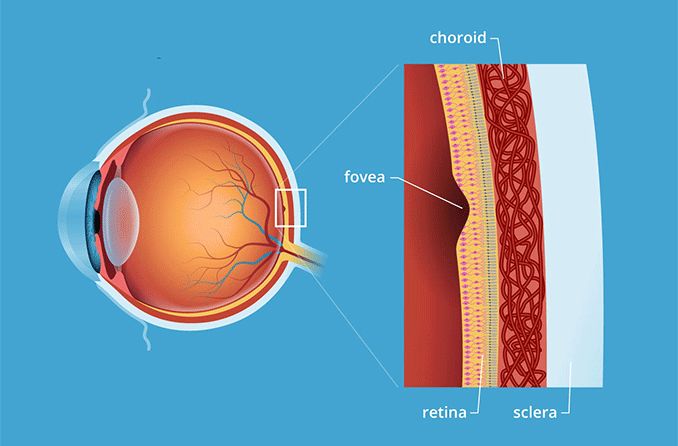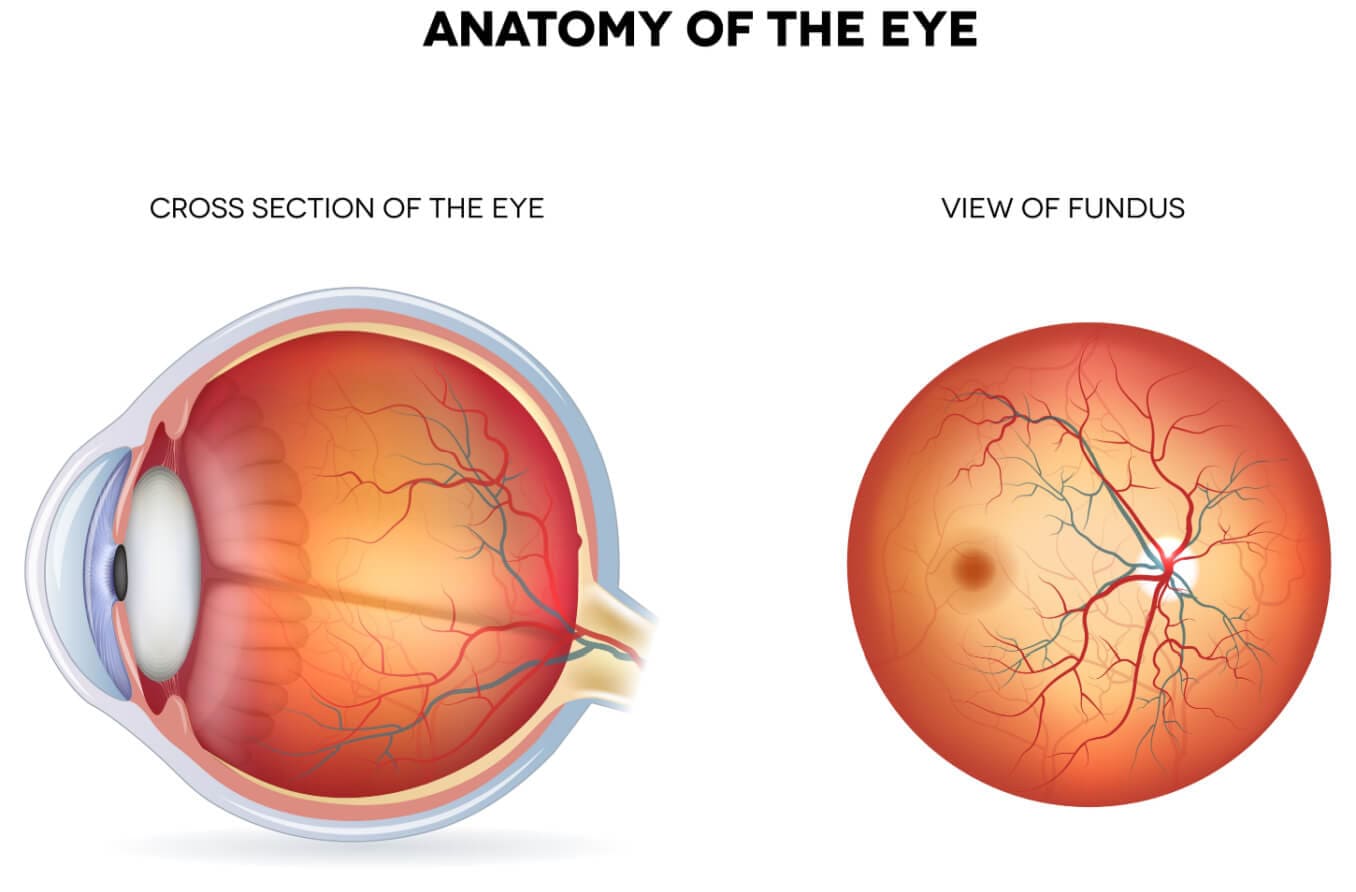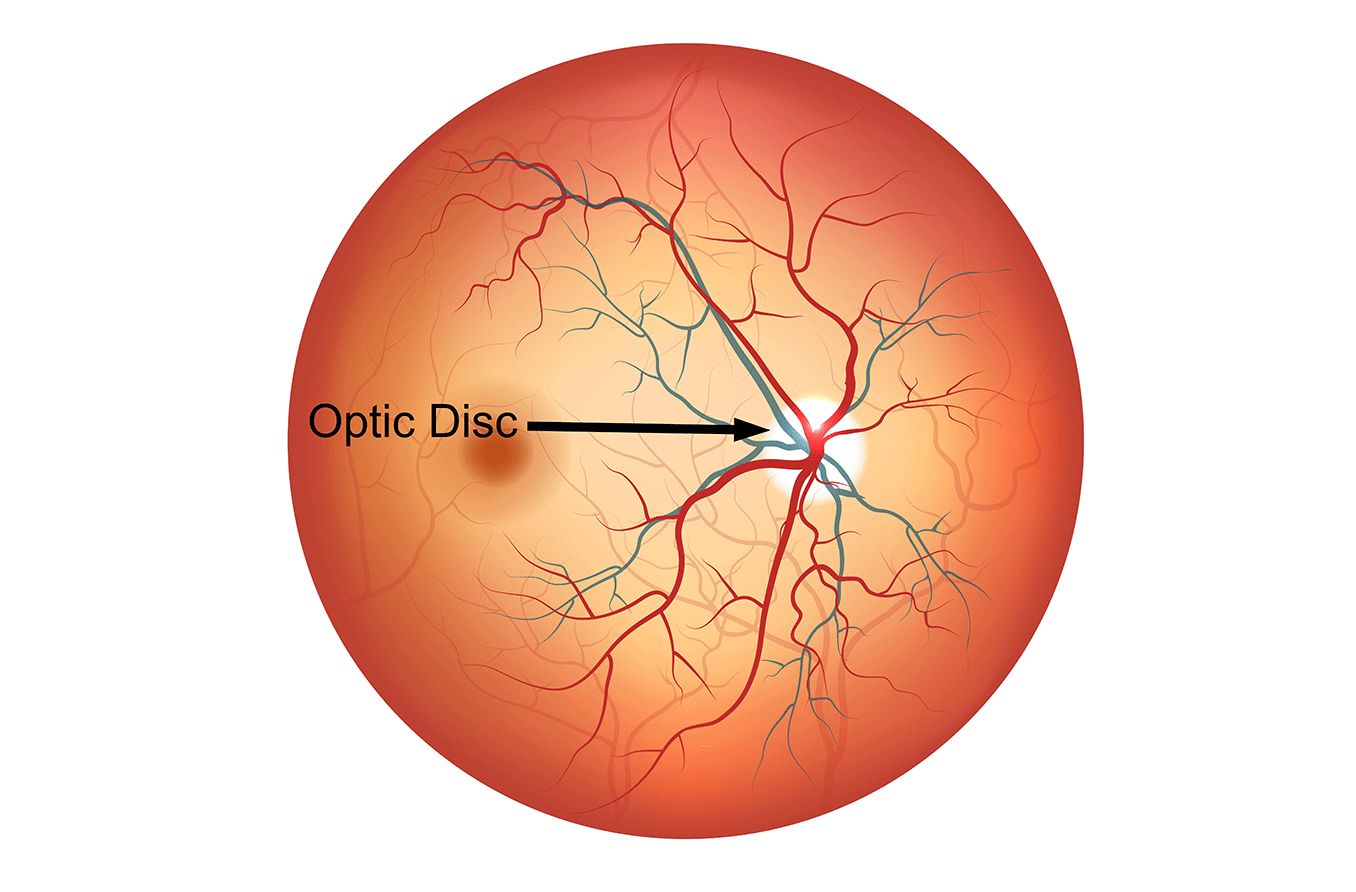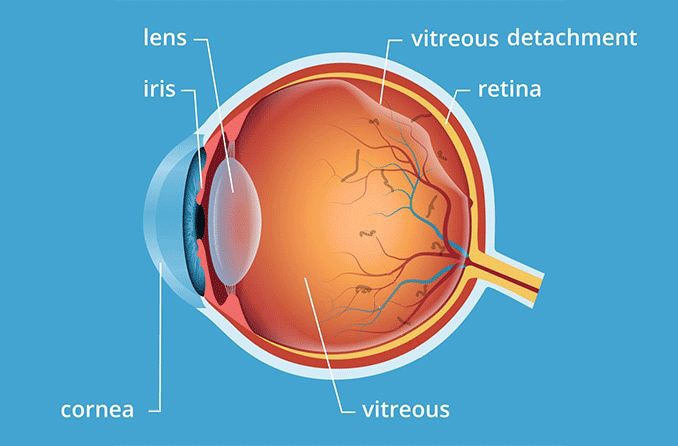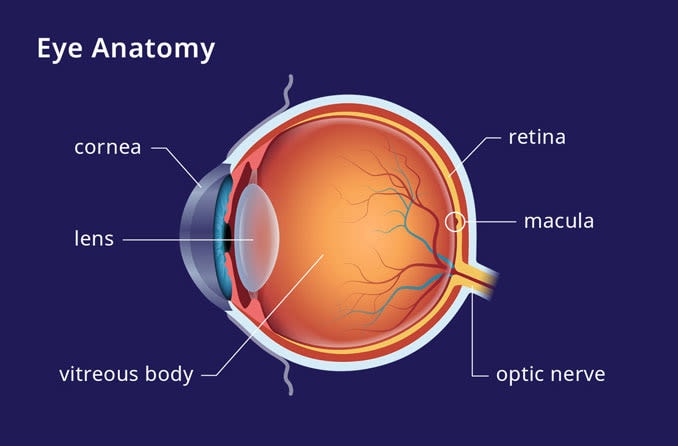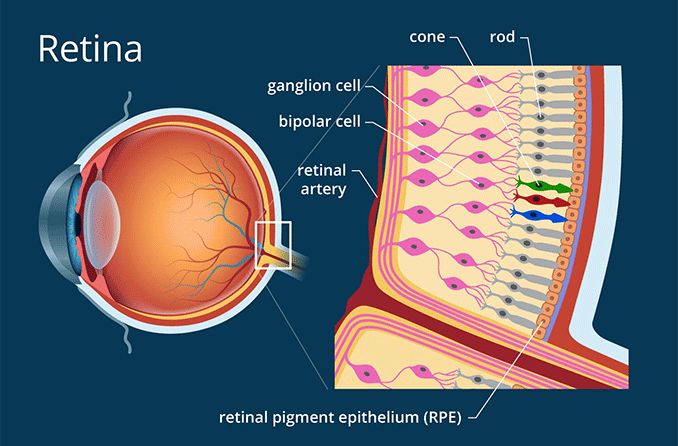Small cells called photoreceptors in the eye play a vital role in night vision and also affect how the eye sees color. Photoreceptor cells are located in the retina, which is the light-sensitive tissue that lines the back of the eye.
There are two kinds of photoreceptor cells: cones and rods. Each type of photoreceptor works to convert different levels of light into signals that are then sent to the brain to form a visual representation.
Photoreceptor function and types
There are two types of photoreceptors: cone photoreceptors and rod photoreceptors.
These cells function by sensing light and/or color and delivering the message back to the brain through the optic nerve. While cone photoreceptors detect color through bright light, rod photoreceptors are sensitive to low-light levels. Rods aid in night vision and identifying black and white hues.
Both cones and rods contain special proteins that assist in their functionality. The human eye contains more rod photoreceptors than cone photoreceptors.
Cone photoreceptors
Cone photoreceptors are activated by bright lighting and help the eye to see color. This type of photoreceptor contains proteins called photopsins (or cone opsins) that help create color pigments for the eye to view.
There are three subtypes of cones: blue, red and green cones — each is sensitive to various wavelengths of light, which allows the eye to see multiple colors.
Red light and objects stimulate the red cones, while green light and objects stimulate the green cones and so on. More than one color cone is stimulated to see the colors in between. For example, a yellow object — such as a banana — stimulates the red and green cones simultaneously, as red and green combine to create a yellow hue.
The eye has approximately 6 million cones, which are mostly located in the fovea, a pit-like structure located in the center of the retina that sharpens the details of images you see.
Rod photoreceptors
Rod photoreceptors are sensitive in dimly-lit environments, and assist the eye in night vision and seeing in black and white. These photoreceptors contain a protein called rhodopsin (also called visual purple) that provide the eye with pigmentation in low-light conditions.
This type of photoreceptor does not have any subtypes, and does not help the eye see color — which is why when you view objects at night (or in otherwise dark environments), everything appears in a gray scale.
There are over 100 million rod cells in the eye. Unlike cones, rods are not found in the fovea portion of the retina.
SEE RELATED: Commotio Retinae
Vision conditions that involve photoreceptors
Various vision conditions involve the photoreceptors — many of which have to do with how light enters the eye. This includes the following:
Retinitis pigmentosa – a genetic disorder that affects how the retina responds to light.
Usher syndrome – a rare genetic disorder that affects vision, hearing and balance — this is often associated with retinitis pigmentosa.
Color blindness – a color vision deficiency that affects the way the eye sees color.
Photokeratitis (snow blindness) – a painful but temporary loss of vision due to overexposure to ultraviolet (UV) rays.
Tetrachromacy – a condition that results when an additional type of color receptor cell is present in the eye.
Retinitis pigmentosa and Usher syndrome currently do not have a cure, though there are some genetic therapies and innovative treatments (such as bionic eyes for retinitis pigmentosa) that show promise for treating these conditions.
Color blindness also does not have a cure, but colorblind glasses can help people see color better with the use of special filters in the lenses.
Photokeratitis usually resolves within a few days and can be prevented with proper UV protection.
SEE RELATED: Retinal Dystrophy
Photoreceptors and vitamin A
Vitamin A is a component of rhodopsin, the protein found in rod photoreceptors. Getting enough vitamin A is important to help you see in low light, as well as for overall eye and body health.
Deficiencies in vitamin A can lead to a number of vision conditions, including the following:
Vision loss
Retinal damage (which can lead to blindness)
Some supplements and eye drops can be taken to make sure you are getting enough vitamin A. The vitamin is also found in many foods, such as beef liver, carrots and sweet potatoes.
Keep eyes healthy with routine eye exams
Retina photoreceptors are vital for the vision system. The best way to keep them (and your eyes) in good health is through regular comprehensive eye exams.
Additionally, because the photoreceptors are located in the back of the eye, a comprehensive eye exam is necessary to detect any problems with the cells that could potentially lead to a complex vision condition.
SEE RELATED: Eye anatomy: A closer look at the parts of the eye

